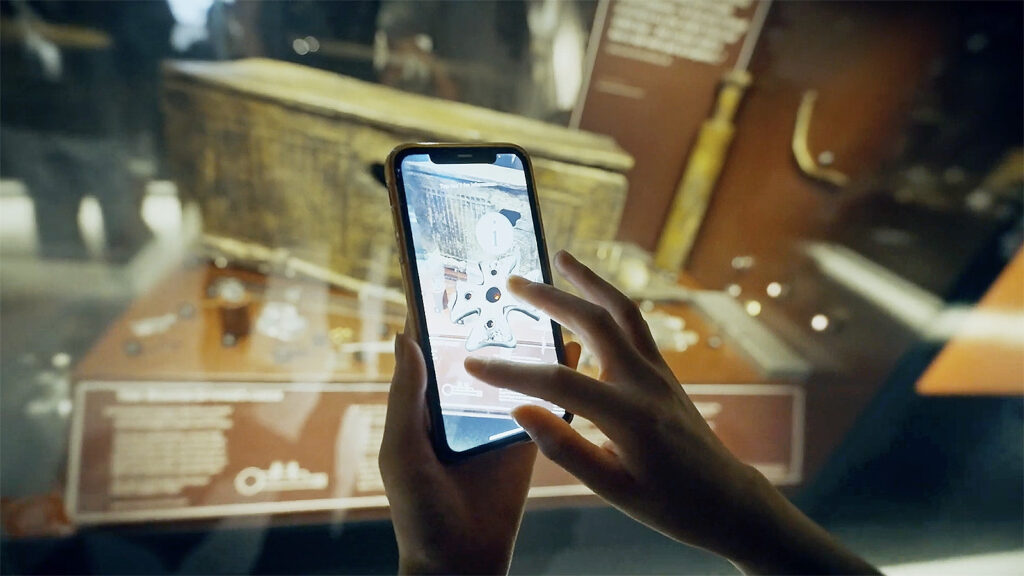Forty years ago, when the Tudor warship the Mary Rose was salvaged from the Solvent, it represented one of the most complex maritime archaeological excavations. But more so, it surfaced a literal 16th century time capsule. As the naval vessel was raised, so too were artifacts ranging from sailing equipment to weapons to kitchen utensils to casks to personal items belonging to the crew.
Since 1984, the ship’s surviving hull and about 19,000 objects found onboard have been held by the UK’s Mary Rose Museum, which has sought to document its history and preserve its legacy — for a 21st century audience. That means digital tools have been called upon: the Portsmouth venue offers a virtual view of its ship hall, 3D models of some artifacts on Sketchfab, and multimedia resources like podcasts that draw out the Mary Rose’s historical context. New to its digital arsenal is an AR experience touted as a “world first in terms of being multisensory augmented reality.”
What happened

Using the Time Detectives mobile app, young visitors can scan onsite artifacts to unlock AR animations, with scent technology, contained in a backpack, adding to the immersive experience. Image: The Mary Rose Museum
Earlier this month, the Mary Rose Museum launched its first AR experience, Time Detectives, with the intent of “immers[ing] players in the sights and sounds of life on board the Mary Rose almost 500 years ago.”
Aimed at young visitors, the interactive experience entails a mobile app that players can use as a “magical spyglass” to uncover clues, solve a mystery, and complete a mission for the king. They’re guided along their quest by placeable 3D characters, some reconstructions of the ship’s actual crew members. Onsite users are also equipped with a backpack that, at key moments, emits scents that enhance the narrative. Firing a virtual cannon, for example, calls up a whiff of gunpowder.
Priced at $5.99, Time Detectives was designed and created by Picture This Productions, the XR entertainment studio behind British Airway’s award-winning Fly VR experience. Per Alex Hildred, Head of Research at the Mary Rose Museum, the exhibition is as much “a one-of-a-kind experience within the museum… as an engaging learning tool at home or in the classroom.”
Why it matters

The experience, said Alex Hildred, Head of Research at the Mary Rose Museum, is as much “a one-of-a-kind experience within the museum… as an engaging learning tool at home or in the classroom.” Image: The Mary Rose Museum
As museums worldwide continue to feel the slowing of foot traffic, such immersive onsite projects have become go-tos to court in-person visitation. In the UK, cultural organizations as varied as the National Gallery and the Historic Royal Palaces have used digital technologies to enrich their exhibitions, just as immersive galleries are increasingly dotting the landscape.
In the same vein, the Mary Rose Museum’s multisensory and gamified AR experience melds a buzzy piece of creative tech with immersive scent to reanimate the venue’s historical and educational offerings. Then again, scent technology — also leveraged by other institutions including the Prado — remains unwieldy here, with visitors having to tote around backpacks, making immersion an actual burden. No way to say yet if such an immersive aspect makes for an appealing exhibition (though the app’s price might make it sustainable for the museum), but its novelty might be attractive enough for audiences seeking special in-person cultural experiences.



